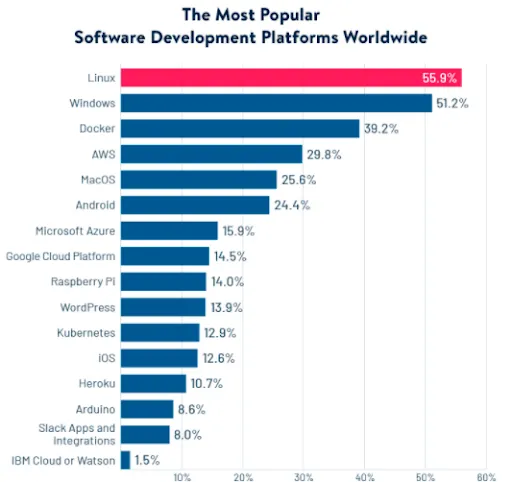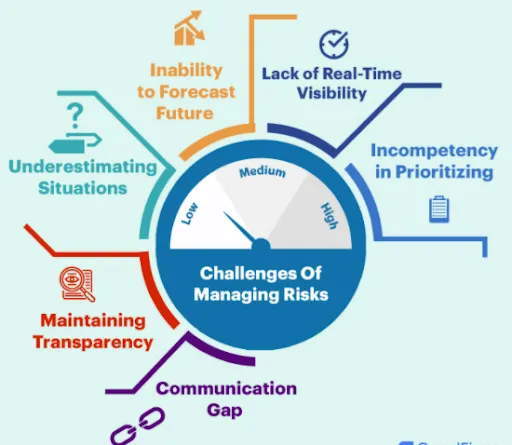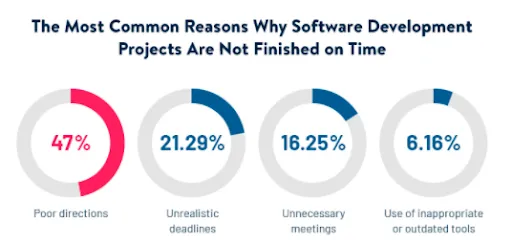Custom software development has been around since the early 1980s. Many businesses have turned to custom and off-the-shelf solutions. It is the best way to solve problems by using custom business logic without spending too much time and money on development.
The history of software development spans centuries, not decades. From the first adding machine to calculate square roots hundreds of years ago, the technology has been advancing. Our civilization has been improving technology in ways previously deemed impossible.
And, those hardware and software upgrades brought some great advancements. It includes calculating calendars or even retail applications like letting customers buy things on credit. Moreover, Custom software development has always been a challenge for many companies.
A custom software project can be complex and time-consuming, which is why it’s important to have best practices in place to mitigate the risk of failure. Implementing risk management solutions can help identify and address potential pitfalls early on, improving project outcomes. So here, know which challenges and risks you can face while custom software development and how you can alleviate the risk with best practices.
What Is Custom Software Development?
Custom software development is the process of building a custom solution for an organization’s needs. Customized solutions can come in many different shapes and sizes, such as mobile apps with specific features to fit your company branding or web applications that give customers easy access to their account info no matter where they are on any device.
Many organizations choose this method because they are looking for something that’s not available in the market. Custom software development entails much more than just writing code to make an app or website work a certain way.
There is also project management, QA testing, UI design, and branding involved in this process as well. With so many steps involved, it’s critical to have a solid roadmap in place with predetermined milestones.
Get free consultation and let us know your project idea to turn it into an amazing digital product.
Process of developing custom software application
The process of developing a custom software application involves the following steps:
Define your needs:
Before proceeding with any development or implementation plan, it’s important to first define your needs. This is the most critical part of any software development effort.
It is because you want to make sure all requirements are clearly identified, documented, and analyzed for feasibility before writing a single line of code or designing screens.
This will help assure that everyone involved in this project is on the same page when it comes time to start development work, and it also gives you a clear idea of your end goal. If you don’t take this step; it’s easy to lose sight of your project goals and get sidetracked by other nonessential features.
Specify the requirements:
Once there is a clear understanding of what needs to be done, the next critical decision revolves around deciding how much work should actually go into each requirement before developing any solution.
This is where you’ll need to do some careful analysis of requests and determine how they align with the business needs.
For example, if a customer comes up with an idea for a mobile application that can display all their products in one place, so they never have to worry about forgetting what’s on sale or running out of inventory, then this request is a great use case for some mobile-friendly web application.
Just remember not to prioritize requests based on how interesting they are to you but rather on how much they’ll benefit the company’s business goals.
Once all possible features are listed out and sorted with proper priority, then it becomes easier for developers to determine which requests can be completed in less time without compromising their overall project objectives.
Also Read: Also Read – How to Manage Risks in The Software Development Lifecycle
Determine the budget:
Before starting any development work, it’s important that everyone involved in this project is informed of the costs that are associated with it.
This includes time, resources, and any additional expenses that might be needed to successfully complete a project. Without having an accurate estimate for how much work will go into each request, you run the risk of overspending on your budget or not being able to deliver features as quickly as you should.
Define the scope:
Once everyone has an idea about how long it’s going to take and what things are expected of them, then the next step is defining a clear scope for this project. This means detailing exactly how much work will be done on each request before moving on to other tasks or features that might come up later on.
Once a solid roadmap is in place, it becomes easier for everyone involved to focus their efforts and make sure they’re spending time on the right tasks at any given moment.
Establish milestones:
A common practice among project managers when developing custom software applications is establishing short-term goals or checkpoints known as milestones. These are used to monitor progress, finalize requirements and ensure that everything is on track before continuing work.
The number of milestones needed will vary depending on the size and complexity of a project, but they’re usually set at certain points in order to hit deliverables or key events such as initial development kickoff, launch date, or adding new features. This way, there’s always a clear idea of what has been achieved and how much work is left until the project is completed.
Designing and Development:
With all the necessary groundwork completed, it’s time to start designing and developing your custom software application. This is where you’ll need to make sure you have a solid team of developers who are well-versed in the latest technology trends as well as best practices for efficient development workflows.
Moreover, in order to form a leading software, it’s important to use attractive UI/UX design, appropriate programming languages, and technologies.
PHP, JavaScript, C#, Java, and Python are the most preferred programming language for software development.
Also Read: What Does Your Business Lose by Delaying Software Development?

Around the globe, Linux is one of the most popular software development platforms.

Testing:
You don’t want to miss one tiny detail during this process. That’s why it’s important to test each small piece of the software development chain before moving on and adding more features or functionality.
The best way to check whether there is any bug in your app or not. For this, you need to do beta testing, which can be done by asking clients to test the application.
Deployment and Marketing:
Deploying your custom software is not less important than any other phase of the development process. If you are deploying an app online, then first create a landing page for that particular app to tell people about it, and on that, insert Google Analytics code so that you can track visitors coming from different sources, i.e., search engines, referrals, etc.
At last, you need to promote your app and make it popular among the masses. You can do so by putting ads on different Google Adwords platforms or Facebook pages, and so on…
Well, by taking help from a recognized custom software development company, you can manage all the custom software development processes in a simple and agile way.
Get free consultation and let us know your project idea to turn it into an amazing digital product.
Risk and Challenges Involved In Custom Software Development
Custom software development is challenging work that comes with many risks. Like any project, there are always unforeseen circumstances that can happen along the way. Here’s a breakdown of some common risk factors involved in custom software development:

You’re Overly Ambitious
Although you might think your idea is unique, there is a good chance that the features and requirements already exist in software development solutions. Without looking into available options before diving headfirst into development, this can lead to wasted time and money when you realize it’s not what was needed after all.
This typically happens with startups where the founder wants to create something that is much more than what they originally intended.
The Solution Is Not Solved
When you’re working with custom software development, there’s always a chance that the solution isn’t solved in such a way that it’ll actually benefit the company moving forward. This could be because requirements were misunderstood or not well thought out.
Without making sure that the solution fits into your business model, it might not be worth all of the time and energy you put into development, to begin with.
Project Don’t Have Purpose
Without a clear purpose for the software you’re creating, it’s likely that your project will be abandoned. It may get limited in some way. Without having a solid goal to work towards, there is no direction. In fact, nobody can determine if they are reaching success because things like ROI cannot be calculated.
Poor Reach and Communication
Most projects need a team of people working together to make sure everything is completed as it should. There should be proper reach and communication from the team. Without this, things can slip through the cracks or not be done as they were intended. It ultimately leads to frustration on all ends.
Inaccurate Development Estimates
When it comes to custom software development, most projects are done on an Agile or Waterfall model. These models require accurate estimates of the time and resources needed for each step in order to avoid going over-budgeted hours and having a team sitting around waiting to move forward with other parts.
Without planning properly and accurately estimating, you’re likely to see a lot of wasted time.

How To Alleviate The Risk Of Failure With Best Practices?
The best way to avoid failure is by doing your research. You must know what you’re getting into before developing the software. This will help weed out any bad ideas or projects that are not feasible at the beginning of a custom development project.
Here’s how to reduce risks and challenges:
Start with an MVP
You must start with an MVP (minimum viable product) if you want to reduce the risk of failure. Also, make sure you’re getting one that’s proven. This is a critical step in mitigating your risks early on while still allowing room for changes if needed.
Start Small
The best way to mitigate challenges during custom software development is by starting small and then expanding. This way, if something goes wrong with any step of the process, you can just go back to the previous stage and fix it instead of having to start all over again.
Also Read: Latest Technologies Transforming Software Development Landscape
Prioritize
Another best practice is prioritizing your project in order to make sure everything gets done on time while minimizing risk. Make a list for every task, and then determine the order in which you want to do them.
With these best practices, you can reduce your risks of failure when custom software development is involved. Customizing a solution for your business needs may be complex and time-consuming, but it doesn’t have to be risky if you’re aware of all possible challenges ahead of time.
Communicate Frequently
Custom software development requires a lot of communication between you and your developers. To reduce risks, make sure to communicate frequently about what’s going on with the project so there are no surprises later down the road or misunderstandings that can cause delays.
Technical Risk Mitigation
When it comes to custom software development, there are many variables that can cause challenges. Technical risks include things like whether or not the code is maintainable and reusable for future projects. Moreover, this can be a case if all requirements have been met by everyone involved in the project.
There are also organizational risk factors such as a lack of communication between your team members. However, it may be if there are too many people working on the project at one time.
By following these risk mitigation best practices, you can avoid many of the major risks and challenges. This usually comes with developing a custom software solution for your business. The more prepared you are ahead of time, the better off you’ll be on project completion, and this is what a company wants?
Get free consultation and let us know your project idea to turn it into an amazing digital product.
Here is How ValueCoders Eliminate Risks In Software Development?
The software development team at ValueCoders follows the following things to eliminate the risks in software development.
- Proper Planning & Analysis
- Defining plans to clients
- Frequent communication
- Multiple Testings
- Timely Update and Maintenance
About Us
ValueCoders offers custom software development services that are second to none. They have maintained 97% client retention and delivered 4200+ projects so far.
They have the business domain knowledge, proven methodologies, and technological expertise of 450+ skilled developers from around the world. Also, they are who can code in over 14 different languages, including Python or C#.
Moreover, ValueCoders software developers ensure outstanding quality output for their clients’ needs all across industries like healthcare & life sciences as well retail companies such as Google.





